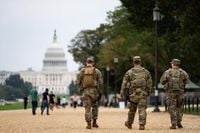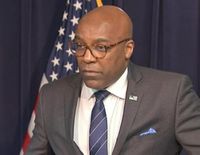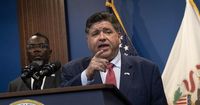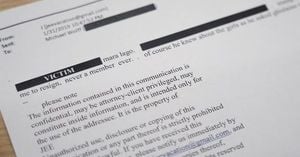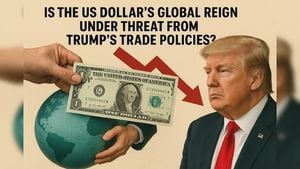Political tensions are boiling over in several major U.S. cities as President Donald Trump’s administration continues to deploy federal troops and agents to urban centers, igniting fierce backlash from state and local officials. The latest flashpoints—Seattle, Portland, and Chicago—are emblematic of a wider confrontation over the limits of federal power, state sovereignty, and the future of American democracy.
On September 29, 2025, Seattle’s City Hall became the stage for an urgent news briefing. Mayor Bruce Harrell and Washington State Attorney General Nick Brown addressed growing concerns that Seattle might soon face a federal takeover similar to what unfolded in Portland the previous day. According to MyNorthwest, both officials made their opposition to federal intervention crystal clear. “We don’t need the National Guard here. We don’t need the United States Military here. We don’t need President Trump continuing his reckless and destructive behavior in the great state of Washington,” Brown declared. Harrell echoed this, insisting, “There are no insurrections here. So I repeat our message to this president is very simple: stay out of Seattle.”
Despite the strong rhetoric, Harrell and Brown admitted they had received no official notification of a federal operation targeting Seattle—only rumors circulating on social media. Nevertheless, they are coordinating closely with leaders in Oregon, California, and Illinois to learn from recent federal actions and prepare for any escalation. “It is unprecedented. It’s un-American, and I think it is ultimately unlawful, and so anything that would be attempted here, we will be prepared to respond,” Brown said, as reported by MyNorthwest.
In a bid to assert local authority, Harrell announced plans to sign a new executive order later in the week to “communicate to all of our communities that we will protect our local control.” He countered the Trump administration’s claims of lawlessness with statistics: “Crime is down. Safety is up. Violent crime is down. Property crime is down. Homicides are down 44%. With 130 officers so far this year, police hiring is three times higher today than a year ago.” Harrell, Brown, and Governor Bob Ferguson are in constant communication, ready to coordinate any legal or political response to federal actions.
The anxiety in Seattle is rooted in recent events in Portland, where, on September 28, President Trump announced on Truth Social that he was “directing Secretary of War, Pete Hegseth, to provide all necessary Troops to protect War ravaged Portland, and any of our ICE Facilities under siege from attack by Antifa, and other domestic terrorists.” He added, “I am also authorizing Full Force, if necessary.” According to Politico, the order caught Pentagon officials off guard, with one defense official calling Trump’s claims “nonsense.”
In Portland, the deployment of 200 members of the Oregon National Guard was made against the explicit wishes of Governor Tina Kotek. This move mirrored a similar deployment to Los Angeles earlier in the year—a deployment that had been ruled illegal by a federal judge. The Intercept reported that the Oregon deployment prompted immediate legal action from local officials, who filed a lawsuit in U.S. District Court. Their complaint argued that, “for over a century and a half, Congress has expressly forbidden federal military interference in civilian law enforcement,” and that the justification for the occupation was “patently pretextual and baseless.”
Recent protests in Portland, according to local officials and independent reporting, have been small—typically involving fewer than thirty people—and focused on the Immigration and Customs Enforcement (ICE) building outside downtown. Portland Mayor Keith Wilson, Governor Kotek, and Attorney General Dan Rayfield all joined the lawsuit, noting that there had been no arrests since mid-June and that the city was not experiencing the chaos described by the White House. “There is no national security threat in Portland. Our communities are safe and calm,” Kotek declared on social media.
Elizabeth Goitein, senior director at the Brennan Center, told The Intercept, “Under law and tradition, the military should be used to quell civil unrest only in the most extreme circumstances where state and local authorities are overwhelmed and have asked for help. The situation in Portland comes nowhere close to the level of disorder that has historically prompted states to request assistance from the federal military, which is why local authorities haven’t made such a request.”
Despite legal setbacks, Trump has pressed ahead with a sweeping domestic deployment of federal forces. According to official military sources cited by The Intercept, roughly 35,000 federal troops have been deployed within the U.S. this year under Title 10 authority, a move that places them under direct federal control. States affected include Arizona, California, Florida, New Mexico, Texas, and now Oregon. In Memphis, Tennessee, troops are being sent under Title 32 status, which keeps them under state command—at least on paper.
Legal and political opposition has been fierce. U.S. District Judge Charles Breyer, who ruled the Los Angeles deployment illegal, warned that Trump was attempting to transform the National Guard into a presidential police force. Lawsuits have also been filed in Washington, D.C., and now Portland, challenging the federal government’s authority to override state control of law enforcement.
The controversy is not limited to the Pacific Northwest. In Chicago, a weekend surge in federal immigration enforcement saw armed agents patrolling the city, detaining individuals, and reportedly firing a pepper ball at a journalist’s vehicle and tear gas at peaceful protesters. Illinois Governor JB Pritzker was blunt in his criticism. “In any other country, if federal agents fired upon journalists and protesters, when unprovoked, what would we call it? If federal agents marched down busy streets, harassing civilians and demanding their papers, what would we say? I don’t think we’d have any trouble calling it what it is: authoritarianism,” Pritzker said at a press conference, as reported by various outlets.
Pritzker also revealed that Trump plans to deploy 100 military troops to Illinois. Chicago has been in the administration’s crosshairs since August, along with other predominantly Black cities such as Baltimore and Memphis. Earlier in September, Trump posted an AI-generated image of himself as Lieutenant Colonel Kilgore from Apocalypse Now, with Chicago burning in the background—a not-so-subtle message that drew national attention.
California Governor Gavin Newsom and Pritzker have emerged as leading voices in a growing chorus of state officials challenging what they see as federal overreach. Their message is clear: resisting federal invasions will require unity among state and local leaders, businesses, and communities. The coming weeks are likely to test the resilience of American institutions and the balance of power between federal and state governments as never before.
As lawsuits wind their way through the courts and city halls brace for further intervention, the nation watches closely. The outcome of these confrontations could reshape the boundaries of executive power and redefine the relationship between Washington and the states for years to come.
